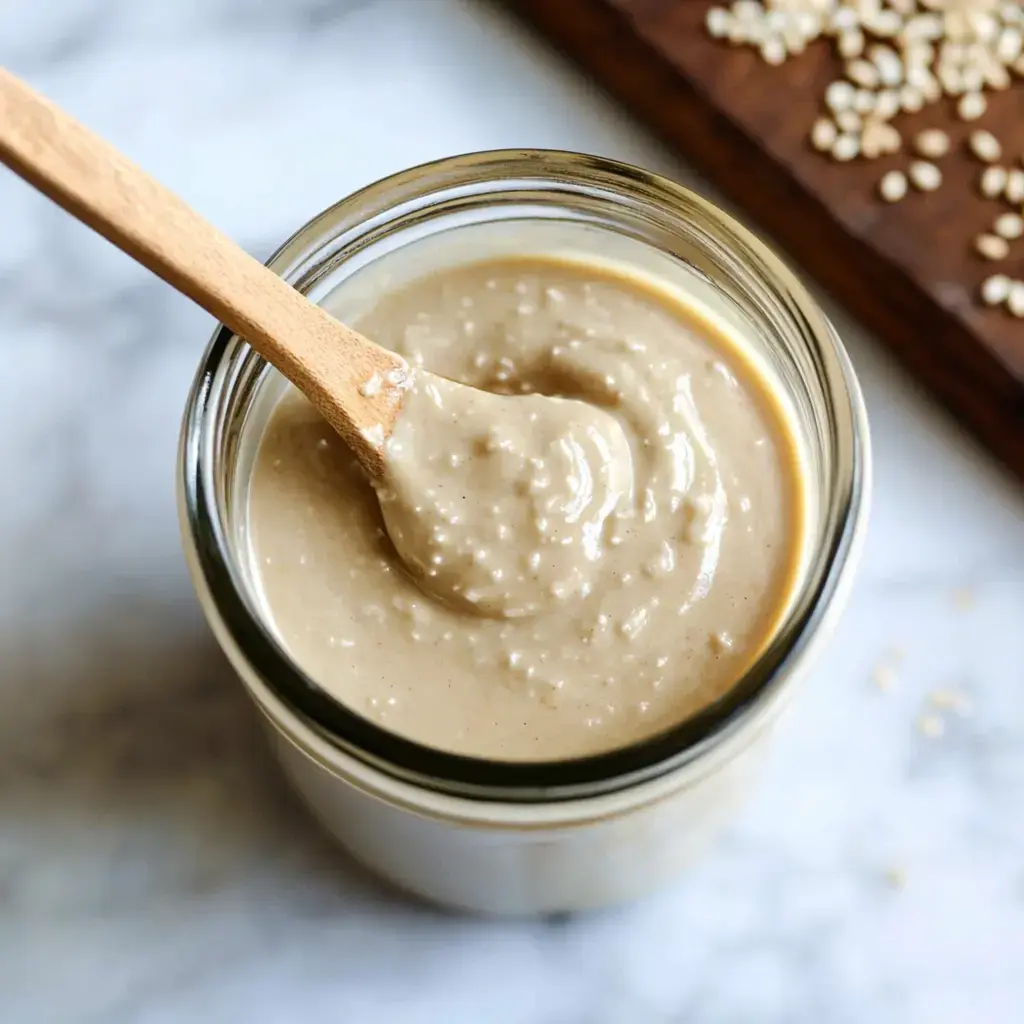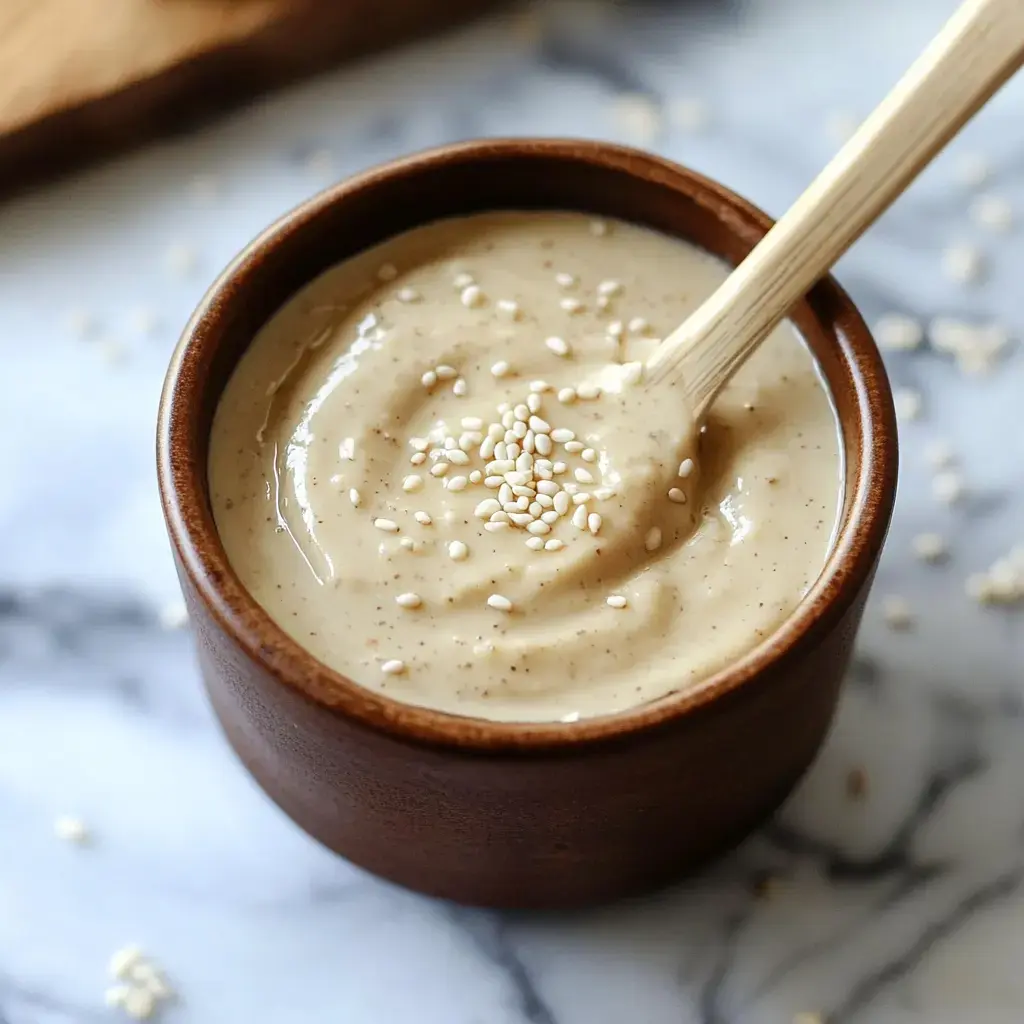 Pin it
Pin it
Whip up homemade tahini in just 15 minutes. Ditch those expensive store versions and create your own creamy, flavorful paste that's much tastier. It's quick, easy, and much cheaper too.
Benefits of Homemade Versions
Homemade tahini simply wins on flavor. When you toast those sesame seeds yourself, you'll get incredible nutty notes. It's easy to throw together, saves you money, and fits perfectly into vegan and gluten-free eating plans. Toss it in hummus, whip it into dressings, or blend into sauces. You won't find any strange additives or chemicals - just pure, authentic flavor that makes store options seem bland.
Ingredients List
- Hulled Sesame Seeds: Your base ingredient. Grab hulled varieties for creamy results. You can try unhulled too but they'll give a stronger, more bitter kick.
- Oil: Choose something neutral tasting - avocado, grape seed, or mild olive oil work great.
- Salt: Add a tiny bit if you'd like. It's totally optional.
Preparation Steps
- Toast Seeds:
- Get a clean, dry skillet over medium-low flame. Add your sesame seeds in a single layer. Keep them moving constantly - they burn easily! They're done when they turn slightly golden and release that wonderful nutty aroma, about 3-5 minutes. Your nose will tell you when they're perfect.
- Blend Seeds:
- Allow those toasted seeds to cool down briefly, then dump them into your food processor. Pulse them for about a minute until they look gritty like sand. Don't stress if they aren't completely broken down yet, we're just getting going.
- Add Oil:
- Slowly pour in your first two tablespoons of oil while the processor runs. Let it mix for 2-3 minutes, pausing occasionally to push down what sticks to the sides with a spatula. You'll see it transform from crumbly to smooth - pretty cool!
- Check Texture:
- Look at your tahini carefully. Need it runnier? Pour in another tablespoon or two of oil and keep processing. Everyone prefers different consistencies - adjust for how you'll use it. Sample until it matches your preference.
- Season:
- Want to add salt? Now's your chance. A small pinch goes far - you can always add more later. Run the processor once more briefly to mix everything together.
- Store:
- Transfer your fresh tahini into a clean container with a snug-fitting top. It'll stay good in the fridge for around a month, and don't worry about separation - that happens naturally. Just stir it well before using.
Superior Homemade Quality
Forget pricey store tahini. Make it at home in minutes. You decide what ingredients go in, and the taste blows away packaged versions. You'll also cut costs and save trips to specialty stores.
Choosing Quality Seeds
Look for hulled sesame seeds for super smooth results. Always toast them first - it brings out amazing nutty richness. Don't rush past this step, it completely transforms the flavor.
Nailing The Oil Balance
Go with oils that won't overpower the sesame - avocado or regular cooking oil works great. Begin with 3-4 tablespoons to create that silky, pourable consistency that matches commercial versions.
Creative Applications
Use tahini beyond basic hummus. Blend it into your salad dressings, spoon over falafel, or drizzle on roasted vegetables. Go sweet too - add it to cookie batter or top your ice cream. Once you start experimenting, you'll reach for it constantly.
Storage Tips
Store your tahini in a container in the refrigerator. It'll remain fresh for more than a month. Just mix it up before each use since natural separation happens. Now you've always got fresh tahini waiting whenever a recipe calls for it.
 Pin it
Pin it
Frequently Asked Questions
- → What seeds are best?
White seeds work great. Hulled ones are smoother. Use fresh ones, and toast until just golden. Don’t burn them!
- → How to thin it?
Blend in a drip of oil or a splash of water. Stir well. Easy to tweak the texture as you like.
- → No food processor?
A sturdy blender works too. It may take a bit longer, but with breaks, it gets done. Patience pays off!
- → How long does it last?
Store in the fridge for up to a month. Keep the jar sealed tight, stir before you use it, and watch for spoilage.
- → What if it separates?
Totally normal! Stir it back together, like you’d do with nut butter. Mixing fixes it every time.
- → Why isn’t it smooth?
Give it more blending time. Add extra oil if needed. You can strain it too if you like. Toasting the seeds well helps.
- → Taking it to go?
Pack it tight in a sealed container. If mixing elsewhere, stir it up fresh. Spills can get messy, so plan ahead.
- → Want to make it faster?
Toast the seeds quickly, but let them cool a bit before blending. You can make a single jar in no time—it still tastes fresh!
- → How to make a big batch?
Double the ingredients if needed. You’ll need to toast more, blend longer, and make space. It stores well!
- → How to boost flavor?
Toast the seeds a little more for richer flavor. Sprinkle in some salt, garlic, or even spice if you like. Keep it bold but simple!
- → Seeds stay chunky?
Toast them a bit longer and add a bit more oil to help them break down. Blend in smaller batches and scrape the sides often.
- → What if it’s bitter?
Don’t over-toast the seeds. Use fresh sesame or oil, and maybe add a pinch of salt—or a touch of honey for balance.
Conclusion
If you’re loving this, mix up some hummus next. Or try a smoky eggplant dip—both pair perfectly with this creamy spread.
